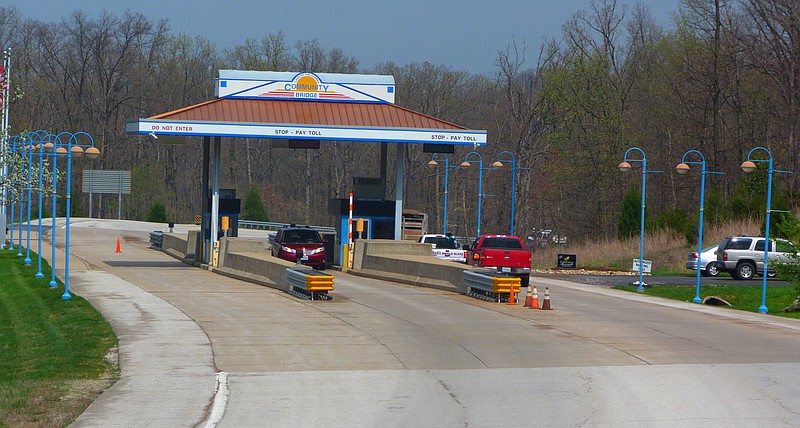Last week, the Lake West Chamber of Commerce announced it would launch a study on May 8 to survey drivers crossing the Lake of the Ozarks Community Bridge.
Survey cards will be handed out to every third vehicle, asking drivers to take an online survey on how the bridge can best be used in the future.
The drivers' answers will be used to recommend policy to the Community Bridge Commission.
But the chamber news releases cautioned that the survey results are not intended or guaranteed "to directly result in any specific policy or operational change to the bridge. This includes, but is not limited to, cost of fares or prioritizing road improvements near the bridge."
Earlier this year, Tracy Greever-Rice of the University of Missouri Extension Service met with the chamber, business owners and interested parties to explain the upcoming study on the effects of the Lake of the Ozarks Community Bridge on the Lake of the Ozarks Westside community.
The Lake of the Ozarks Community Bridge, which opened in May 1998, is a privately-owned structure built at a cost of approximately $19.5 million. The bonds issued to pay for the initial construction are being paid back with revenue garnered from tolls. The bridge, which carries traffic from Missouri 242 in Lake Ozark to Missouri 5 in Sunrise Beach via state routes TT and MM, was designed to cut in half the 60-plus-mile trip through Camdenton that
travelers used to make to get from one side of the lake to the other.
The toll bridge operates on a system of user fees that charge a $3 toll for two-axle vehicles from March to November, when traffic is heaviest, and $2 toll for two-axle vehicles from November to March, when traffic counts are at their lowest.
Vehicles with more than two axles pay a toll that escalates from the base rate.
Following the initial meeting with Greever-Rice, Lake West Chamber Executive Director Deborah Buscher appointed a four-member committee to determine what type of information the group would need to garner through the study. The chamber then began seeking donations from the local business community to pay the study's $4,000 cost.
Meanwhile, the Bridge Commission is also doing a study of the bridge's traffic. That study was prompted by the fact that over the past three years the toll revenue has increased sufficiently to allow the group to replenish its emergency fund.
Following the economic downturn of 2008, the Bridge Commission was forced to use its emergency fund to repay the original construction bonds. However, in 2012, commissioners secured a low-interest loan from the U.S. Department of Agriculture (USDA) to pay off those bonds and restructure the debt.
Because of those lower bond payments, and because the number of automobiles using the bridge has increased over the past three years, this spring the commissioners met the bond obligations as well as replenished the emergency fund as required under its USDA bond convenants.
The Bridge Commission hopes to learn through its own traffic study the best course of action to take in structuring the bridge's future. The commission will use the information it gleans through the survey to decide whether to lower the current toll rates or use the increased revenue to pay off the bridge debt early, according to commissioners Joe Roeger and Larry Gridley.
Although both commissioners said they have not made up their minds, at this time they feel the best course would be to pay the debt off early so the bridge could be turned over to the Missouri Department of Transportation (MoDOT) as originally promised.
Originally the bridge debt was to have been paid off in 20 years from the date of opening, but the date has been delayed until 2040 under the USDA loan. Under an agreement with MoDOT, once the bridge debt is free and clear, ownership of the structure will be turned over to the state.

